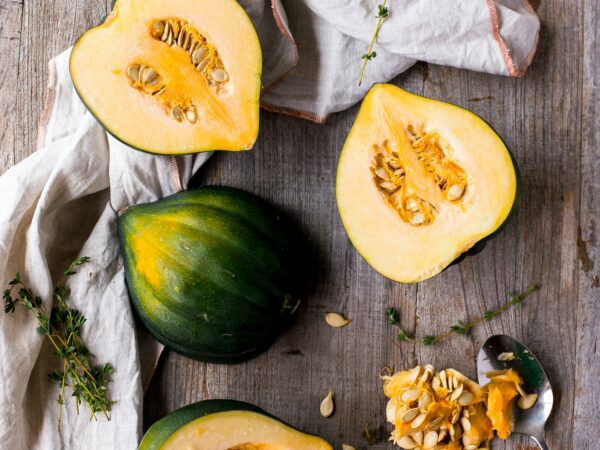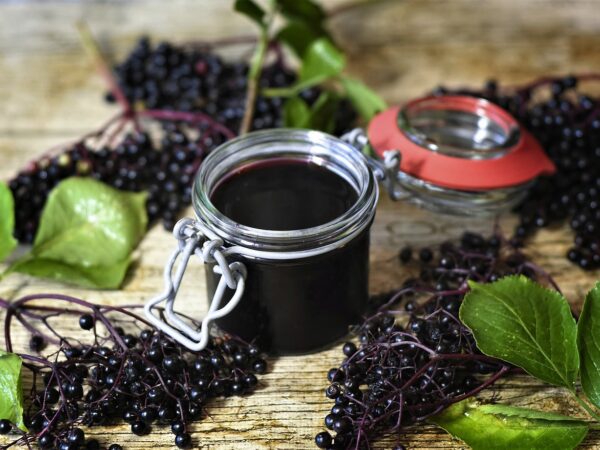When you think protein, what image normally comes into your mind? The first thing that comes to my mind is a flexed bicep. Most people think “muscle building” or “strength,” but know little else beyond that. Today we’re going to dive a little bit into protein basics, why it’s important, and where we can get good quality protein.
Basic Protein Background
A protein is any group of complex nitrogenous compounds used to create body tissue as well as other chemicals that participate in metabolism and maintaining the body in working order. Hormones and enzymes are also classified as proteins. Protein has been perpetuated as the most important macronutrient, and you’ve probably heard people prioritize eating protein over carbohydrates and fat. In fact, it’s name comes from the Greek “proteios,” meaning “of prime importance.”
Proteins have so many important jobs in our bodies: as enzymes that facilitate chemical reactions, as hormones that send messages through the body, as antibodies that protect us from harmful substances, as carriers of oxygen and gases in our blood, as well as forming structural components of our cells.
All proteins are made up of smaller building blocks called amino acids. Of the many naturally occurring amino acids, the proteins in our body are derived from just twenty. Of these twenty, our body has the ability to make twelve. The remaining eight have to be obtained through diet- hence their name essential amino acids.
Before we go into where to get these proteins, let’s dive into “How much do we need?” Most people know that they need protein, but don’t often know the amount their bodies need. The need for protein was determined and published in 1943 by the National Academy of Sciences as the first recommended daily allowance (RDA). The minimum daily requirement was calculated by measuring the amount of nitrogen excreted, and was estimated to be about 0.5 grams per kilogram of body weight (~0.22 g per pound body weight), equivalent to about 6% of total diet calories.
Because this estimate was determined using a small, random sample of individuals, it was adjusted by a couple standard deviations to ensure proper intake for everyone. This was about 0.8g/kg body weight. For a 70 kg (144 lb) male, this is about 56 grams and for a 60 kg female (132 lb) this is about 48 grams. This is about 9-11% of total calories assuming a typical caloric intake of 2000 to 2500 calories, respectively. The RDA has been set to 10% as a rounded off convenience. This amount has since been officially reviewed 14 times by an expert panel of scientists, to ensure it’s credibility.
Where can we get protein?
Protein is found in all natural foods, including plants! If a diet is varied in calories and made mostly of whole foods, it is almost impossible to get an inadequate protein intake- even if you don’t eat meat. Animal sources of protein have been touted as the best source because they contain all 20 amino acids, hence their name “complete” protein. Most plant foods do not contain all amino acids and have been considered “incomplete” proteins, prompting the need to “combine” proteins in order to get all the amino acids you need but this myth has since been disproven. In reality, the body is quite capable of taking incomplete proteins and making them complete by recycling.
Some argue for animal based protein due to their high biological value (HBV) meaning the proteins are most easily absorbed into the body. Just because the value is higher, however, doesn’t mean that one will have higher health. Increasing body growth may be useful for growing animals and children, but it also means faster cancer cell growth, faster heart disease onset, and faster aging–each of which has been documented.
A real life example of this is that young growing girls are now maturing earlier, having their menstrual cycles younger in life, and have higher circulating levels of estrogen- a marker of breast cancer risk. Animal source protein was shown to stimulate the production of hormones that encourage growth of cancer cells. Plant based proteins, however, did not promote these events and even started to slow down and halt cancer cell activity.
In addition to these, when animal based proteins are broken down, harmful pro-inflammatory compounds such as trimethylamine oxidase (TMAO) and insulin-like growth factor 1 (IgF-1) are produced. Animal based proteins are high in saturated fat, the kind of fat that increases production of LDL cholesterol, which is the “bad” cholesterol used as a marker for heart disease risk. They are also completely devoid of fiber, which bulks up the stool and feeds your gut bacteria aka your brain.
So what kind of protein is kindest to the body?
As mentioned earlier, a whole foods plant based diet, when varied and eaten in adequacy, provides all the protein one needs for a healthy life. It’s important to keep in mind that macronutrients aren’t confined to one food group but are found in all good groups! Even greens have a small amount of protein in them. However, it is good to know which foods are particularly good sources of proteins in case you are meal planning or need to increase your protein needs for your training needs. Foods that are packed with protein include nuts and seeds, greens, legumes, and beans.
Here are five of my personal favorite:
- Lentils: 18 g protein per cup
Delicious, super high in fiber as well, and extremely easy to cook. You can find them pre cooked (my favorite is from Trader Joe’s) and serve them as is! Great to dip crackers into. - Tofu: 10 g protein per cup
Super versatile and soaks up the flavors of sauces and marinades. Along with having 10 g of protein per cup, soy has been found to be protective against cardiovascular disease, breast, prostate, and colon cancer. Try it in a tofu “scramble” or silken tofu blended with frozen berries and maple syrup for a protein yogurt. - Spinach: 5 g protein per 1 cup cooked
Surprisingly, spinach has a little chunk of protein as well! Its also packed with iron, calcium, vitamin K, and vitamin C. You’ll be surprised how much spinach you can get through, especially if you throw it in soups, chilis, or stir fries. - Hemp Seeds: 13 g protein per ¼ cup
Not only are they extremely high in protein, but they have the perfect omega 3 to omega 6 ratio. Enjoy them blended into a smoothie, sprinkled on top of your avocado toast, or along with your vegetables and rice. - Edamame: 18.5 g protein per 1 cup
Whole soy beans in the pod, found most commonly in East Asian cuisine. Along with tofu and other forms of soybeans, edamame is rich in protein, fiber, manganese, phosphorus and vitamin K. Trader Joes also has pre cooked edamame, otherwise you can find frozen pods in the freezer section of your grocery stores. Warm them up and serve them on salads, with rice in a deconstructed sushi bowl, or just by themselves as a snack!

Amanda Sevilla, RDN, RYT-500 is a registered dietitian and yoga teacher. She is the human being behind “applesandamandas” on YouTube and @amandavsevilla on instagram. After graduating with her bachelor’s in nutrition and dietetics from Loma Linda, University, she went to India (twice) to learn how to teach yoga, started working as a clinical dietitian, and started plant based nutrition counseling and coaching. Find her at the yoga studio, practicing Ashtanga, at a cafe sipping on an oat milk latte, or curled up on the couch with a journal and some tea.
Campbell, T. C. & Campbell, T. M., II. The China Study, Startling Implications for Diet, Weight Loss, and Long-Term Health. (BenBella Books, Inc., 2005).
Madhavan, T. V. & Gopalan, C. The effect of dietary protein on carcinogenesis of aflatoxin. Arch. Path. 85, 133-137 (1968).
Schulsinger, D. A., Root, M. M. & Campbell, T. C. Effect of dietary protein quality on development of aflatoxin B1-induced hepatic preneoplastic lesions. J. Natl. Cancer Inst. 81, 1241-1245 (1989).
Youngman, L. D. The growth and development of aflatoxin B1-induced preneoplastic lesions, tumors, metastasis, and spontaneous tumors as they are influenced by dietary protein level, type, and intervention., (Cornell University, Ph.D. Thesis, 1990).









